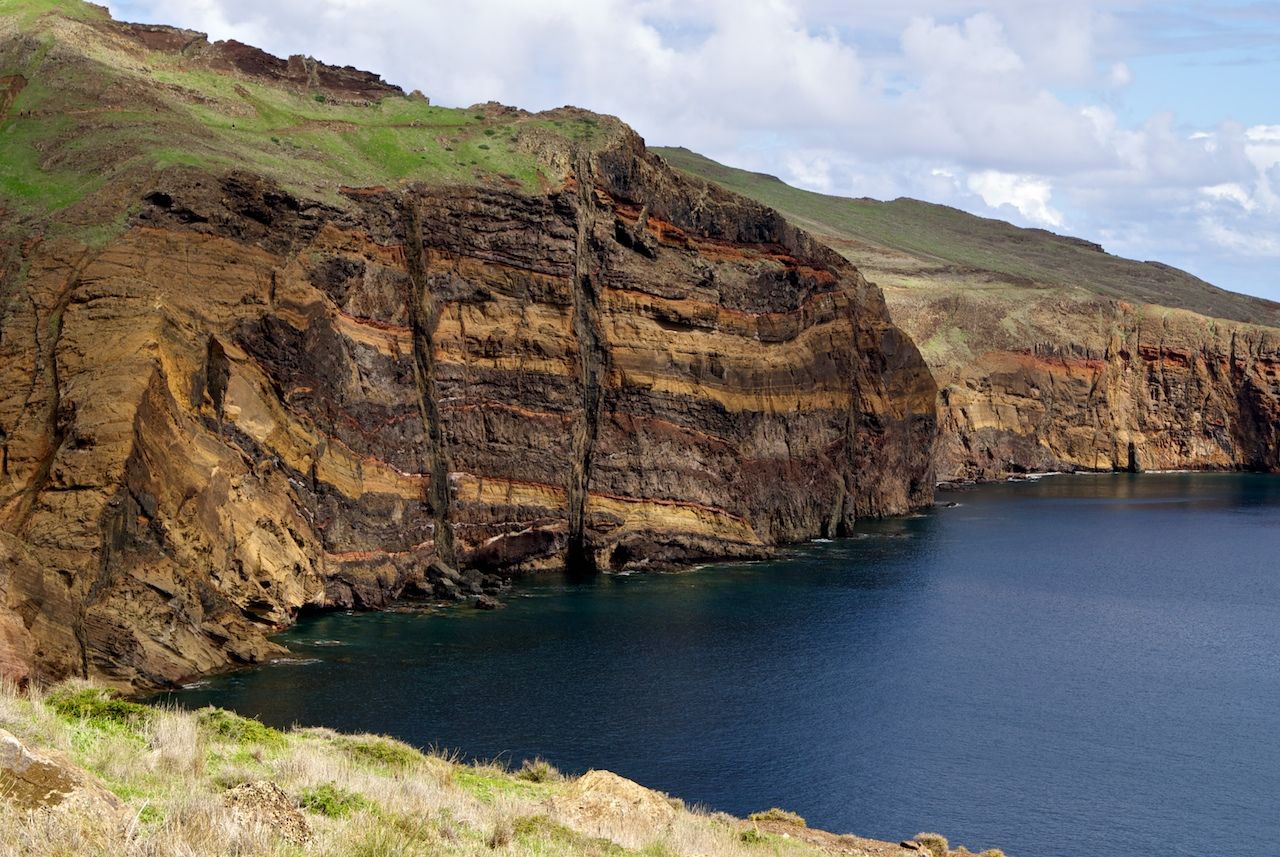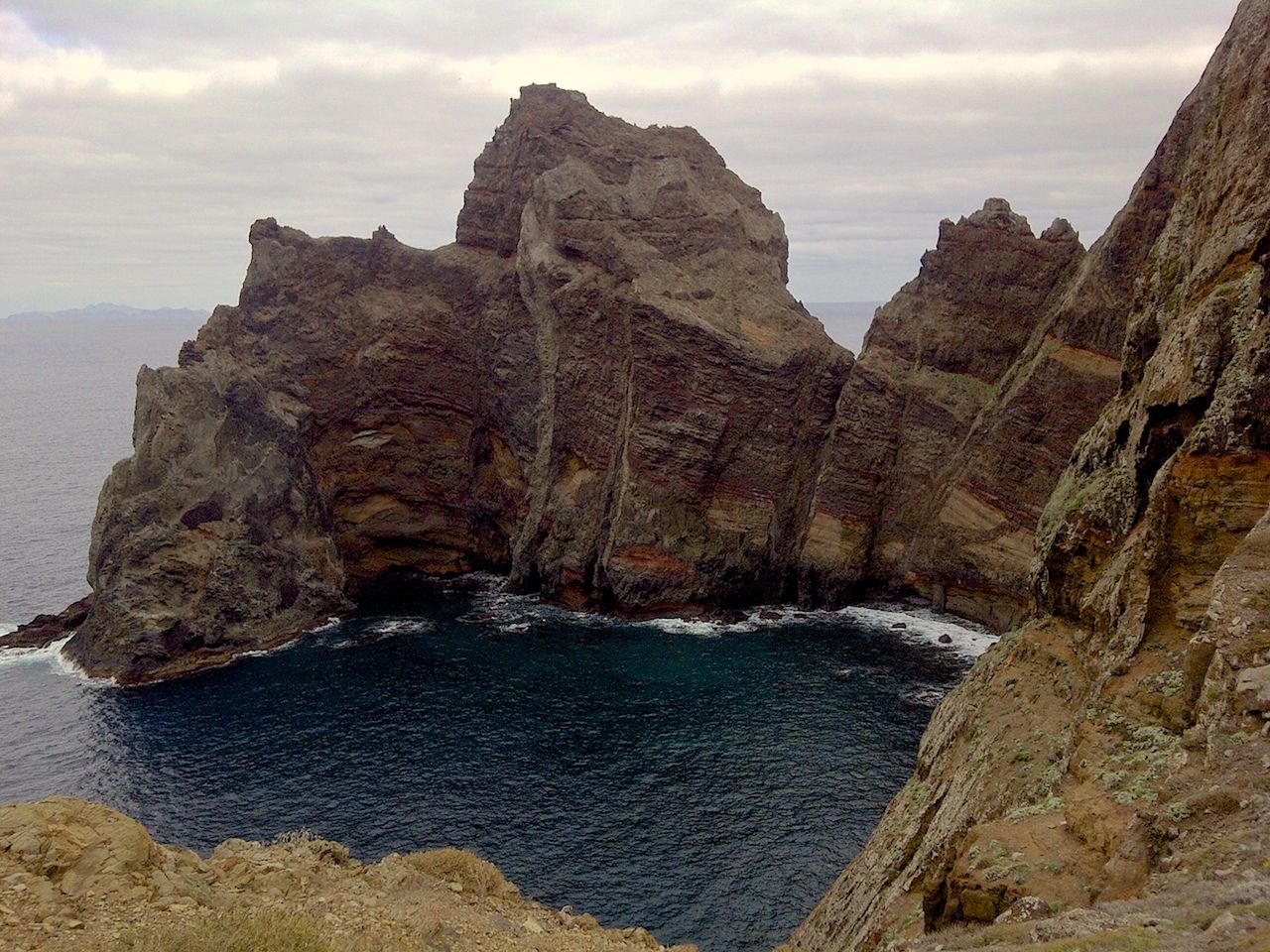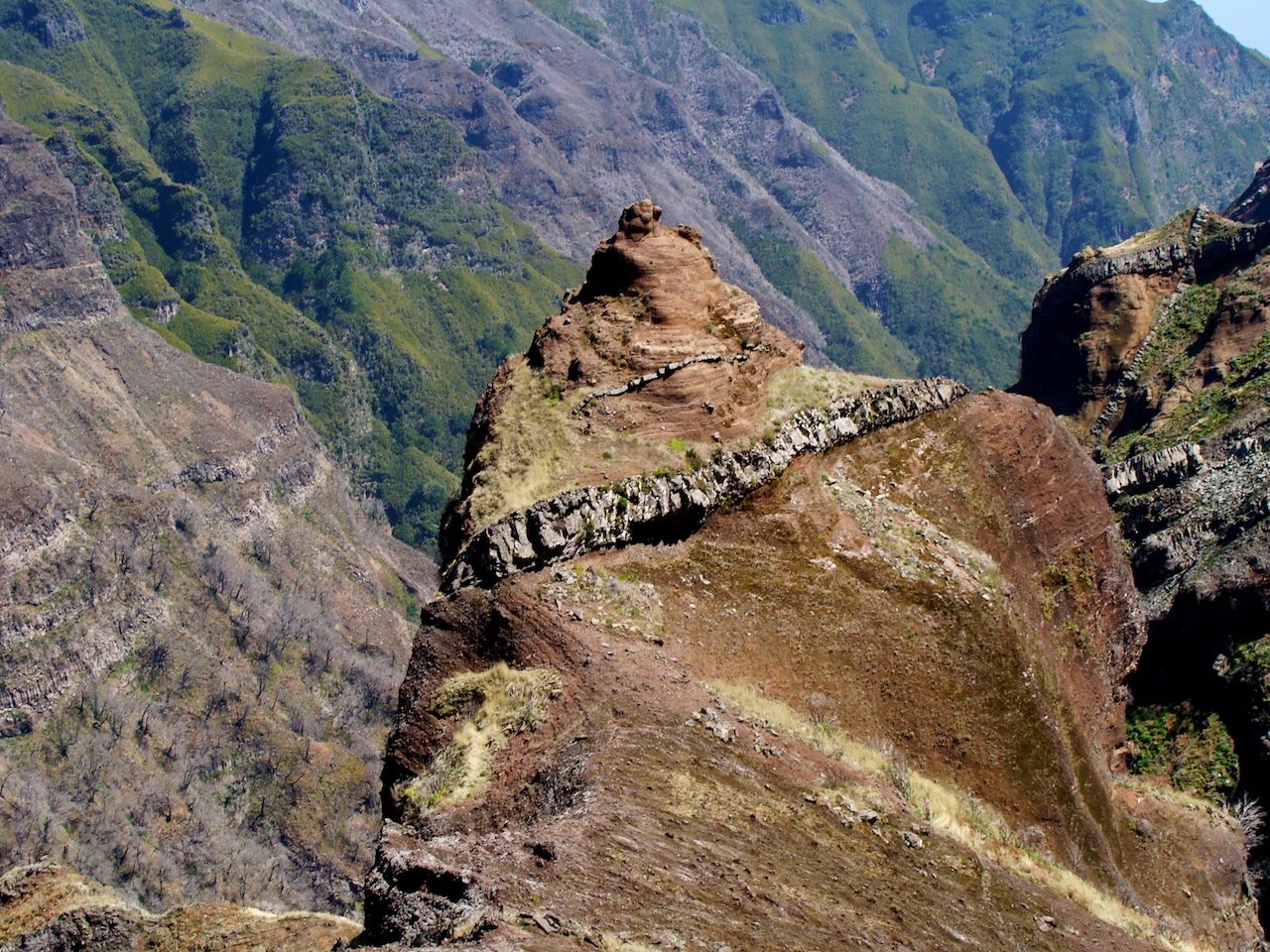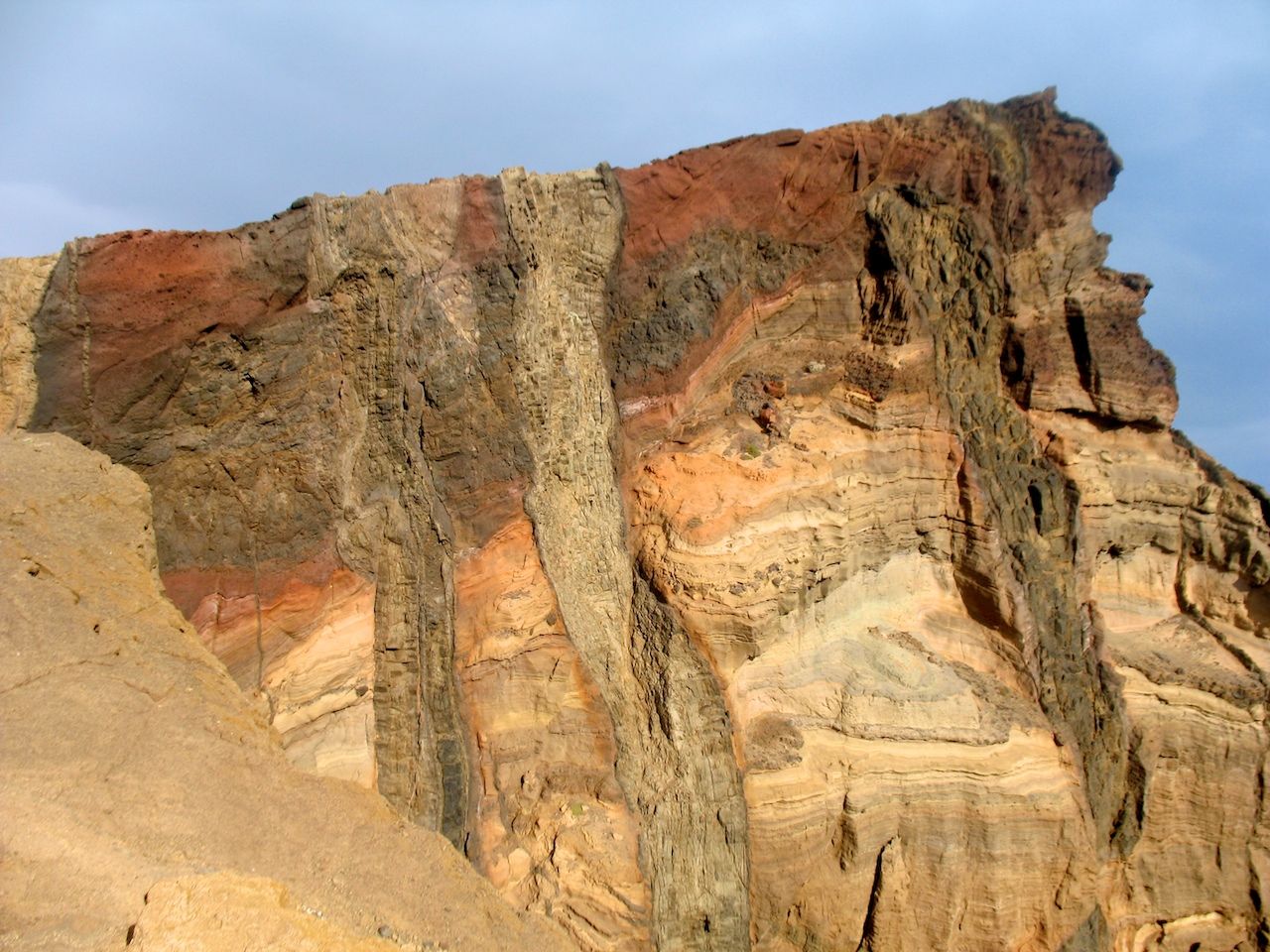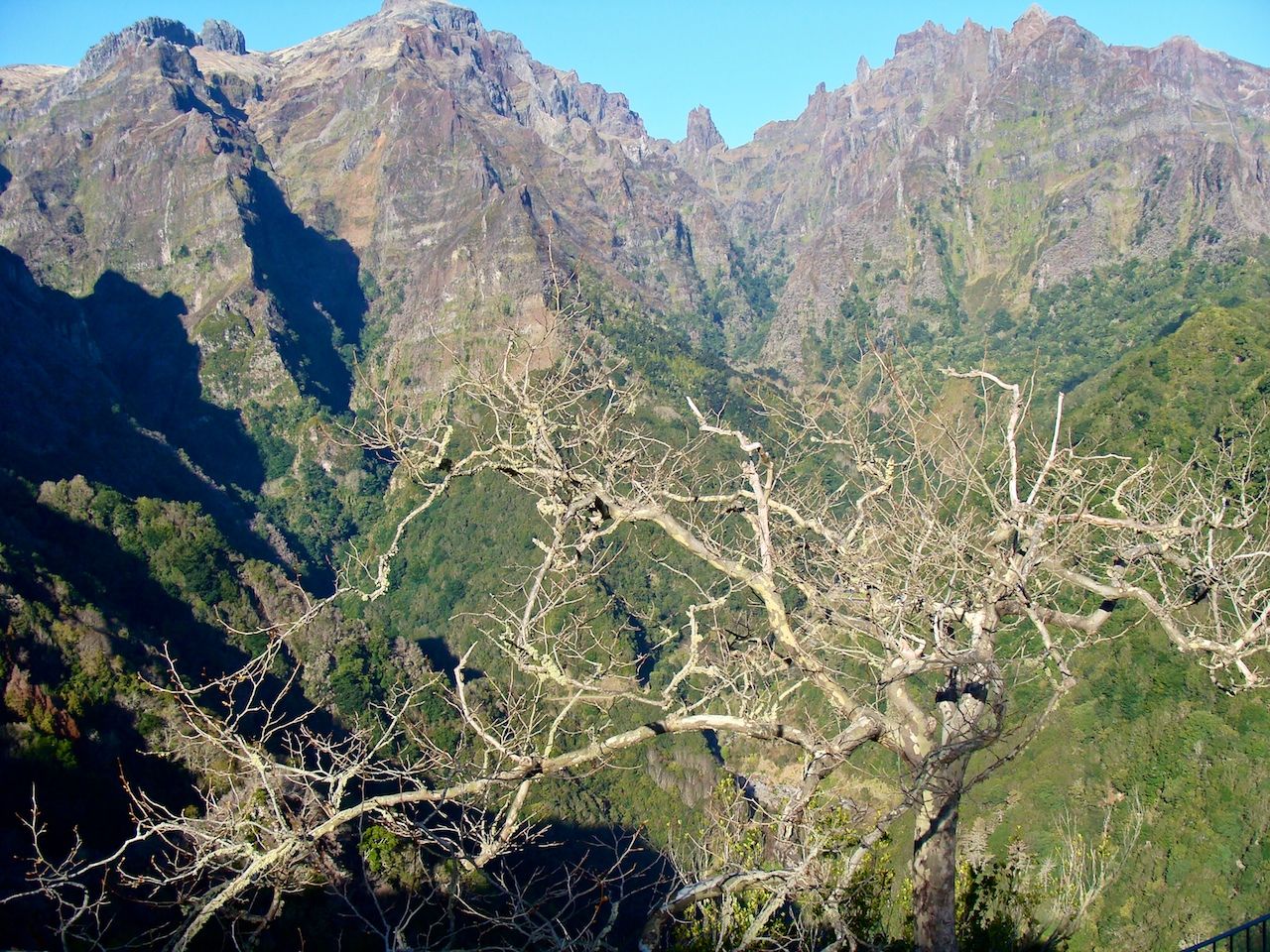Geology
Since Madeira was formed in several volcanic phases, the first began about 18 million years ago, the last ended only about 6,450 years ago, the exact location of each crater is no longer discernible. Remains can be seen in many places in the interior of the island. Impressive are the former sluices of the volcanoes, which unlike the surrounding rock have not yet been eroded by the erosion. In some places in the high mountains you can also see striking mountain tops or rocky cliffs.
The rivers of the island usually have a very steep gradient. Numerous waterfalls lead directly to the sea.
Click on the pictures for an enlarged view.
The Pico Ruivo is with 1862 m the highest peak of Madeira and at the same time one of the highest peaks of Portugal. The coast of Madeira is steep and rocky. Cabo Girão, the "Cape of Inversion", is the highest cliff in Europe with a height of 580m. Fajã was the name of the hard-to-reach fertile headlands, which served as arable land as well as the small fertile high plateaus, the Achadas.
Did you know?
Shepherd skewer: "Espetada"
The delicious meat skewers are a specialty of the island. Fresh beef is cut into pieces and seasoned with coarse salt, garlic and laurel leaves. The meat is stuck on long metal skewers (formerly made of laurel wood) and grilled over open charcoal.
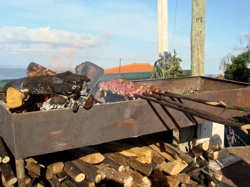
In addition fresh farmhouse bread and „Vinho Seco“ are served. The meat, grilled medium, is very tender and smells of laurel and garlic. Often there are barbecues in the villages at the butchers, where one meets a chat, an "Espetada" and "copo de vinho tinto". Delicious!



